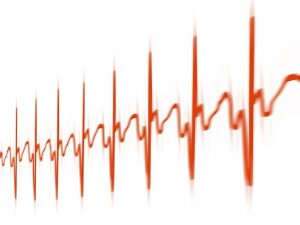Clinical Benefits of Long Term Continuous AECG Monitoring
In recent years, Long Term Continuous AECG monitoring (or also referred to as extended Holter or long-term Holter monitoring) has evolved to the forefront as a gold standard of ambulatory cardiac monitoring. Long Term Continuous AECG monitoring is similar to traditional 24 Holter monitoring in that it records every beat except the monitoring duration has been extended to periods of 3 -30 days.
With the advent of simple, convenient wearable monitoring technologies, clinicians are now turning to Long Term Continuous (long term Holter) monitoring due to the significant increase in diagnostic yield compared to the traditional 24 hour monitoring period. The advancements with peel & stick patch & other wearable monitoring technologies has improved patient compliance making these extended monitoring period easier, more comfortable & more tolerable for patients.
Although the Holter monitor (introduced in 1940s) remains a common method to monitor palpitations & other transient arrhythmias, traditional 24-hour Holter monitoring is reported (Barrett, P., ET AL. 2014) to have a diagnostic yield of only 15% to 39%. In other words, this suggests that 61% - 85% of traditional 24-hour monitoring can remain inconclusive thus warranting the need for further, costlier forms of monitoring such as cardiac event monitoring, mobile cardiac telemetry (MCT) or implantable cardiac monitors (ILR)
Even though there are other forms of extended monitoring can increase diagnostic yield over traditional 24-hour Holter monitoring, these other forms of extended monitoring options are exponentially more expensive, more complicated to use and the inconvenient design often limits the patients’ activities (which ultimately affects the integrity of the diagnosis). In addition to the inconvenience of traditional lead wires, size & weight of a traditional long-term monitor, it estimated that approximately 1 in 4 symptomatic patients are unable to activate their long-term event recorder due to the cumbersome / complicated nature of the process.
As a result, Long Term Wearable Continuous AECG monitoring is moving to the forefront of AECG monitoring. Clinicians are now becoming accustomed to 3x – 30x times more ECG data and expect the increased patient compliance provided by long term continuous wearable AECG patch monitoring.
Clinical Studies Documenting Need for Extended AECG Monitoring:
- Long Term Versus 24 Hour Holter Monitoring
- 7+ Day Continuous AECG Monitoring Captures more an 94% of cardiac arrhythmias
- Extended Monitoring Detects More Arrhythmias in Hypertronphic Cardiomyopathy
- How Wearable ECG Monitors Improve Patient Experience
- Long Term Continuous vs Loop Recorders
- Utility of Long Term Continuous AECG for detecting cardiac arrhythmias
- Diagnostic Yield of Long Term Patch Monitoring is patient with Stroke & TIA
Candidates for Long Term Continuous AECG Monitoring:
- Patients with transient or intermittent symptoms
- Patient with known or suspected abnormal arrhythmias
- Patient monitoring post stroke
- Monitoring a patient post PCI or bypass surgery
- Post-ablation procedure evaluation
- Monitoring for early detection & management of Atrial Fibrillation
- Monitoring a patient when prior EKG or 24-hour Holter study is inconclusive
Patient Benefits of Wearable AECG Patch Monitor Technology:
- Small, sleek, virtually unnoticeable design

- Light weight
- No external batteries
- Water Resistant (EZecg Patch is water proof)
- 3 - 7 times more ECG data compared to 24 Hour Holter
- Quick & Easy Symptom / Event Correlation
- Superior Atrial Fibrillation detection & reporting
- Comprehensive & intuitive report format
- Improve Patient Experience (Patients forget they are wearing a monitor)
- Lower cost compared to other forms of long term AECG monitoring
- Increase patient's confidence in findings for their physician
- Hemodynamics Co EZecg Patch
Summary of Benefits of Long-Term Continuous AECG monitoring:
- 3- 30 times more ECG data -> Increased Diagnostic Yield
- Record & Review of every beat increases detection of asymptomatic cardiac events
- Reduction of ECG artifact improves arrhythmia detection
- Improves the quality & quantity of data presented to the physician
- Improve the patient experience with small, light-weight, easy lead-less design
- Easy to apply for facility staff
Related Links:
- Clinical Indications of Use for Long Term Continuous AECG Monitoring
- Wearable Real-Time AECG Monitoring
- Billing & Reimbursement Information
- ReelWearable+Plus
- EZecg Patch
For questions or more information, please contact a team member today at (832) 520-0179 or by email at sales@Hemodynamics.co
